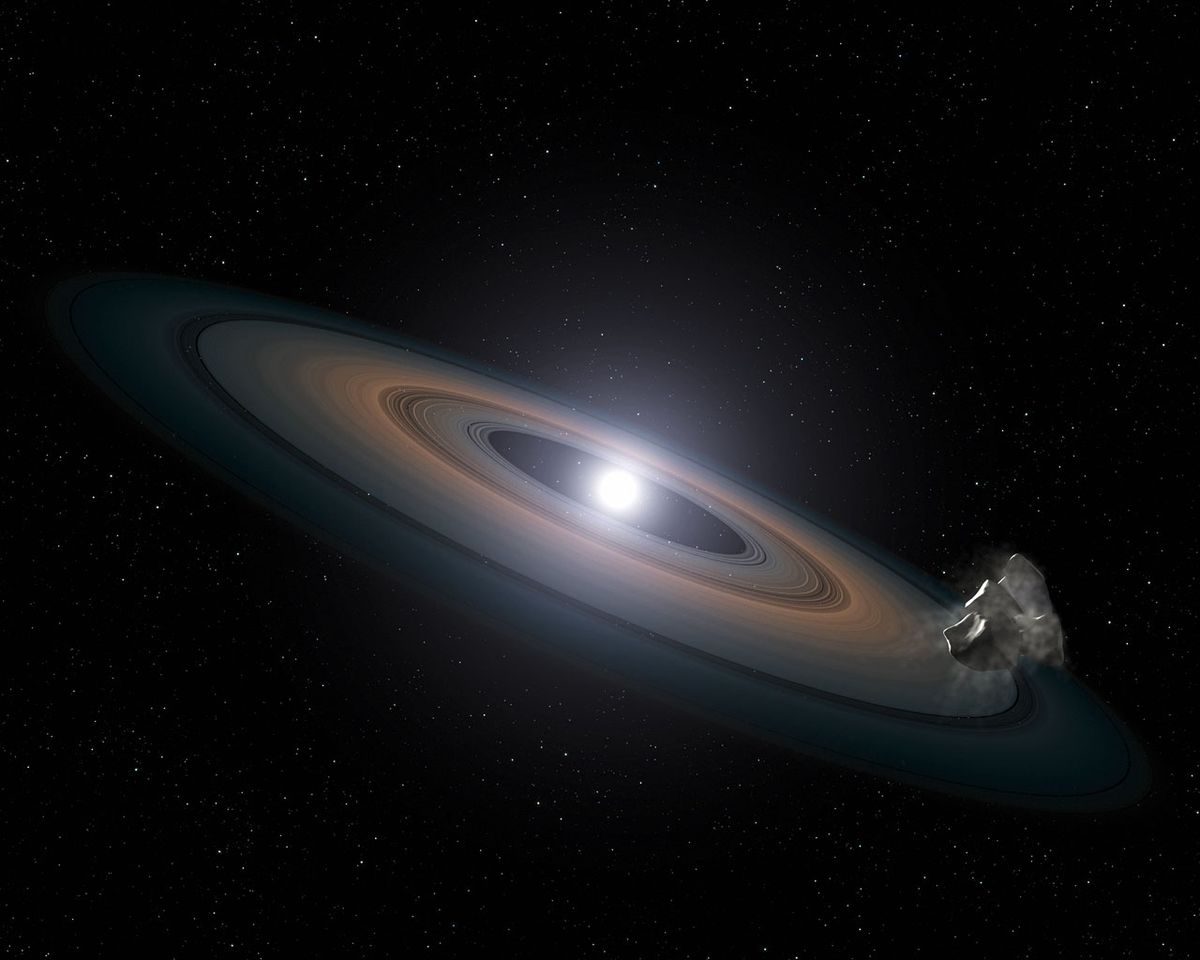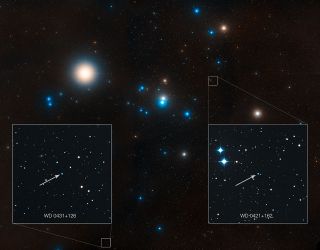Hubble Telescope Discovers 'Polluted' Dead Stars

Inside the Hyades cluster — a nearby collection of stars, 150 light-years away from Earth — the NASA/ESA Hubble Space Telescope has detected a pair of dead stars that are "polluted" with the stuff of planets like our own.
"We have identified chemical evidence for the building blocks of rocky planets," researcher Jay Farihi of the University of Cambridge said in a statement Thursday (May 9). "When these stars were born, they built planets, and there's a good chance that they currently retain some of them. The signs of rocky debris we are seeing are evidence of this — it is at least as rocky as the most primitive terrestrial bodies in our solar system."
Most stars, including our own sun, will end their lives as dense and dim stellar cores called white dwarfs. Farihi and his team sought out signs of planet formation in these types of retired stars in the Hyades cluster, a 625-million-year-old grouping of stars in the constellation of Taurus. [The Strangest Alien Planets]
White dwarf atmospheres are typically quite "clean," with heavier elements clumping in the core, as Ben Zuckerman, a physics and astronomy professor at UCLA, told scientists at the American Astronomical Society meeting earlier this year.

But using Hubble's spectroscopic observations, Farihi and his fellow researchers saw that silicon — a major ingredient in the rocky material that formed Earth — was dirtying up the atmospheres of two white dwarfs. The researchers also identified low levels of carbon with Hubble's powerful Cosmic Origins Spectrograph. (Carbon levels are expected to be very low in rocky, terrestrial material.)
"The one thing the white dwarf pollution technique gives us that we won't get with any other planet detection technique is the chemistry of solid planets," Farihi said in a statement from the European Space Agency (ESA). "Based on the silicon-to-carbon ratio in our study, for example, we can actually say that this material is basically Earth-like."
The material is thought to be leftover from terrestrial planets that formed when these stars were first born. After the stars collapsed into white dwarfs, relics from their asteroid belts may have been knocked into dangerous, star-grazing orbits. Torn apart by the white dwarfs' gravity, debris from these asteroid-like objects was sent swirling around the dead stars in a ring that then funnelled the material inwards, the researchers say.
Sign up for the Live Science daily newsletter now
Get the world’s most fascinating discoveries delivered straight to your inbox.
Star clusters were thought to be unlikely hosts for alien planets. Of the 800 exoplanets known today, just four of them circle stars in these crowded stellar neighborhoods, including one in the Hyades cluster, researchers say. The new findings suggest planet formation in star clusters may be more common than previously believed.
The research was detailed in the Monthly Notices of the Royal Astronomical Society. The team hopes to detect more material around white dwarfs that could tell them about their parent bodies.
This story was provided by SPACE.com, a sister site to Live Science. Follow SPACE.com on Twitter @Spacedotcom. We're also on Facebook and Google+.












